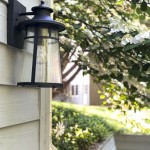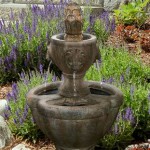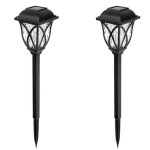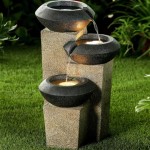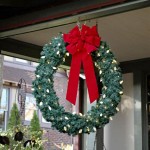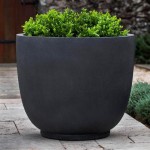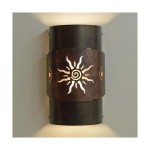How To Install Outdoor Fairy Lights: A Comprehensive Guide
Outdoor fairy lights, also known as string lights, offer an aesthetically pleasing and functional way to illuminate outdoor spaces. Whether enhancing a patio, outlining a garden path, or adding ambiance to a deck, proper installation is crucial for safety, longevity, and optimal visual impact. This guide provides a detailed, step-by-step approach to installing outdoor fairy lights, covering essential considerations from planning to execution.
Planning and Preparation: Laying the Foundation for Success
Before commencing the physical installation, thorough planning is paramount. This phase involves assessing the desired effect, considering safety aspects, and gathering the necessary materials and tools.
The initial step is to define the intended aesthetic and functionality of the lights. Will the lights be used for ambient lighting, highlighting architectural features, or creating a festive atmosphere? This decision dictates the type of lights, their placement, and the overall layout. For example, a subtle, warm glow might be suitable for a relaxing patio setting, while brighter, multi-colored lights could be more appropriate for a celebratory occasion.
Equally important is assessing the available power source. Outdoor fairy lights typically require an electrical outlet. If a suitable outlet is not readily accessible, an outdoor-rated extension cord must be used. The extension cord's gauge should be sufficient to handle the power load of the lights, and it must be specifically designed for outdoor use, featuring weather-resistant insulation and ground fault circuit interrupter (GFCI) protection. Alternatively, solar-powered fairy lights offer a wireless solution, but their brightness and duration of illumination are dependent on sunlight exposure.
The length of the fairy light strand needed must be accurately measured. This involves measuring the total distance to be covered, accounting for any curves, angles, or vertical drops. It is generally advisable to purchase slightly more length than calculated to allow for adjustments and avoid stretching the strand excessively. Overstretching can damage the wiring and reduce the lifespan of the lights.
Selecting the right type of fairy lights is critical. LED fairy lights are generally preferred for outdoor use due to their energy efficiency, long lifespan, and resistance to heat. The Ingress Protection (IP) rating of the lights should also be considered. An IP rating indicates the degree of protection against solid objects and liquids. For outdoor use, a rating of IP44 or higher is recommended, providing protection against splashing water and solid objects larger than 1 millimeter.
The choice of hanging method is another crucial aspect of planning. Common options include using hooks, clips, zip ties, or guide wires. The selection depends on the surface to which the lights will be attached. For example, hooks might be suitable for wooden fences or posts, while clips are often used for attaching lights to gutters. When hanging lights from trees, it is important to use methods that will not damage the bark or impede the tree's growth.
Finally, gather all necessary tools and materials before starting the installation. This typically includes: fairy lights, extension cord (if needed), hanging hardware (hooks, clips, zip ties, or guide wire), a ladder, measuring tape, pliers, wire cutters (if necessary), and safety glasses. Ensuring all materials are readily available streamlines the installation process and minimizes interruptions.
Installation Techniques: A Step-by-Step Approach
With the planning phase complete, the physical installation can begin. The following steps outline a systematic approach to ensure a safe and aesthetically pleasing outcome.
The first step is to prepare the mounting surface. This involves cleaning the surface to remove any dirt, debris, or obstructions. If using hooks, pre-drill pilot holes to prevent splitting the wood. For surfaces that cannot be directly drilled into, adhesive hooks or clips may be used, but ensure they are rated for outdoor use and capable of supporting the weight of the lights.
Next, install the hanging hardware according to the chosen method. Space the hooks or clips evenly along the planned route. The spacing should be sufficient to prevent the lights from sagging excessively, but not so close that it creates an overly rigid appearance. A general guideline is to space supports every 1-2 feet, but this can be adjusted based on the weight and sag of the lights.
Before hanging the lights, it is advisable to test them to ensure they are functioning correctly. Plug the lights into the power source and verify that all bulbs are illuminated. If any bulbs are not working, replace them before proceeding. This prevents the need to troubleshoot the lights after they are already installed.
Carefully hang the fairy lights onto the installed hardware. Ensure the lights are securely attached to each hook or clip. Avoid stretching the lights excessively, as this can damage the wiring. If using zip ties, do not over-tighten them, as this can crimp the wires and reduce their lifespan. As the lights are being hung, periodically step back to assess the overall appearance and make any necessary adjustments.
When using a guide wire, first string the wire between two anchor points, ensuring it is taut and secure. Then, attach the fairy lights to the guide wire using zip ties or clips. This method provides a stable and even support for the lights, particularly useful for long spans or areas prone to strong winds.
If using an extension cord, ensure it is properly connected to the power source and the fairy lights. The connection point should be protected from moisture. This can be achieved using a weatherproof electrical box or by wrapping the connection with electrical tape and securing it with a plastic bag. The extension cord should be routed in a way that it does not create a tripping hazard.
Once the lights are hung and connected to the power source, conduct a final inspection. Verify that all lights are illuminated, the hanging hardware is secure, and the wiring is properly protected from the elements. Make any necessary adjustments to ensure a safe and aesthetically pleasing result.
Safety Considerations: Prioritizing Protection
Safety should be the paramount concern throughout the entire installation process. Adhering to safety guidelines minimizes the risk of electrical shock, falls, and other potential hazards.
Always disconnect the power source before working with electrical wiring or installing hardware. This prevents accidental electrical shock. If working near power lines, maintain a safe distance to avoid contact. If the installation requires working at heights, use a sturdy ladder and ensure it is placed on a level surface. Have a helper to steady the ladder and assist with the installation.
Use only outdoor-rated fairy lights and extension cords. These products are specifically designed to withstand the elements and are less likely to cause electrical hazards. Inspect the lights and cords for any signs of damage, such as frayed wires or cracked insulation, before using them. Do not use damaged lights or cords, as they pose a significant safety risk.
When using metal hanging hardware, ensure it is properly grounded to prevent electrical shock. A ground fault circuit interrupter (GFCI) outlet provides added protection by automatically shutting off the power if it detects a ground fault. It is highly recommended to use a GFCI outlet for all outdoor electrical installations.
Avoid hanging fairy lights in areas where they could come into contact with flammable materials, such as dry leaves or branches. Heat from the lights could potentially ignite these materials, creating a fire hazard. Keep the lights away from water sources, such as swimming pools or sprinkler systems, to prevent electrical shock.
Periodically inspect the fairy lights and hanging hardware for any signs of wear or damage. Replace any damaged components promptly. Regularly clean the lights to remove any dirt or debris that could accumulate and pose a fire hazard. During periods of inclement weather, such as heavy rain or snow, it may be advisable to temporarily disconnect the lights from the power source to prevent damage.
By adhering to these safety considerations, the risk of accidents and electrical hazards can be significantly reduced, ensuring a safe and enjoyable outdoor lighting experience.

How To Hang Patio Lights

28 Backyard Lighting Ideas How To Hang Outdoor String Lights
How To Hang Patio Lights

How To Hang Fairy Lights Outside Easy String Guide

How To Hang Patio Lights

How To Hang Patio String Lights Blue I Style

How To Hang Patio String Lights

How To Hang Patio String Lights Blue I Style

Adding Cafe String Lights To Our Elevated Deck

How To Install Deck Lighting Using Edison Outdoor String Lights
